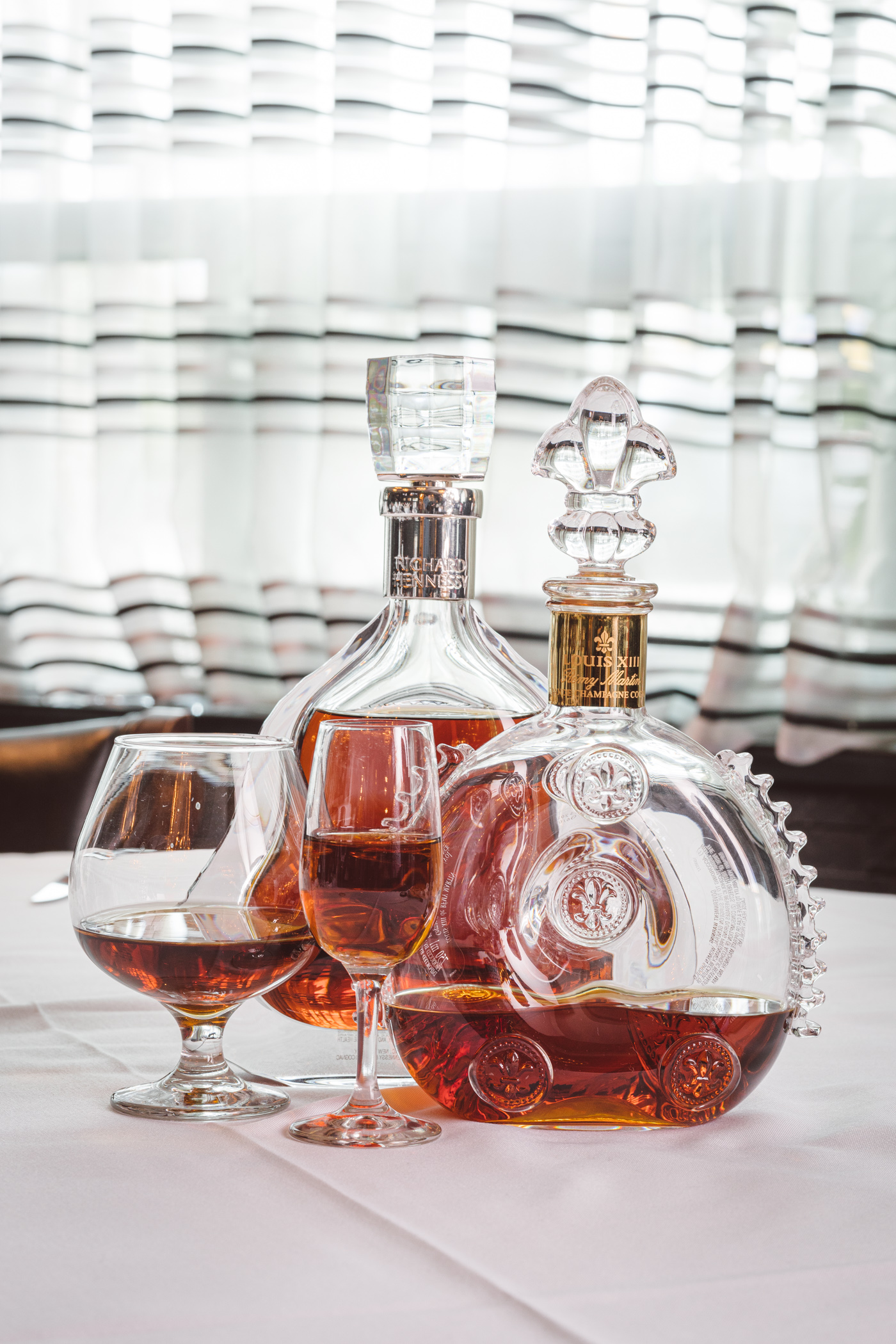Please don’t drink cognac from a snifter. Although the classic stereotype is gentleman in a smoking jacket, swirling a brandy snifter by an open fire, the reality is that Cognac, a brandy distilled from grapes produced in a very small region of France, loses some of its fruity subtlety in a wide-rimmed glass.
Jeff Kelley, lead bartender at Strega Prime in Woburn, likes to serve it in a tulip-shaped sherry copita or Glencairn glass to help concentrate the complex aromas. “Other styles of glassware often have wider rims, which make the beautiful aromatics dissipate,” he says.
Cognac is produced exclusively from specific white wine grapes grown north of Bordeaux and made with very strict regulations, requiring distillation in copper stills and aging a minimum of two years in oak barrels. Letters on the bottle denote the different aging requirements: V.S., or very special, is the youngest, with at least two years aging; V.S.O.P. (very superior old pale) must be aged at least four years; and X.O. or Hors d’Age is at least 10 years old.
“While age does not always equal a superior product; when it comes to brandy, it often does,” Kelley says. “Long barrel aging is suitable for the cool Cognac region of France, and, over the years spent in Limousin [a particular forest in France] oak barrels, cognac gains more and more complexity.”
Strega carries 12 varieties of Cognac from top producers like Hennessy, Courvoisier, Remy Martin, and Delamain. They range from Hennessy V.S., which is sold for $14 per serving, up to the world-renowned Louis XIII from Remy Martin and Hennessy Richard—a blend of more than 100 Cognacs, some dating back to the 19th century. Richard, a tribute to the founder of Hennessy, retails for nearly $5,000 per bottle, and Strega offers it for $225 per ounce.
While regulars order luxury Cognac often, Kelley says something delicious doesn’t have to break the bank. “One of my personal favorite Cognac houses, Delamain, only releases their cognac after spending 25 years in the barrel,” he says, noting that Strega sells this for $25 for a 2-ounce pour. “This is far more [age] than most other mainstream cognacs, while still being relatively affordable.”
Aged Cognacs are best enjoyed neat, perhaps with a drop or two of still water to help the aromas to open within the glass, Kelley says, but younger ones can add an exciting twist to a cocktail.
“Cognac can be enjoyed in longtime classic cocktails like the Stinger, Sidecar, and Alexander, but my personal favorite cocktail including Cognac is the Vieux Carre,” Kelley says. Developed in New Orleans in the late 19th century, it includes cognac, rye whiskey, Italian vermouth, Bénédictine, Peychaud’s, and Angostura bitters.
It’s also fun to swap in Cognac for another brown spirit in a cocktail—say in a Boulevardier, Old Fashioned, or a Manhattan, and explore what the different components contribute. Or if you are normally a bourbon drinker, try tasting it alongside Cognac.
“The differences between grain- or corn-based whiskey and grape-based Cognac make for an interesting comparison and discussion when tasting such spirits side by side,” Kelley says. “Much like the mash bill of a whiskey, the influence of the grapes becomes quite obvious despite the strong flavors imparted by the wood.”
Ultimately, Kelley says, drink Cognac however you like. “We have many guests who opt for a Cognac topped with soda,” he says, or neat, as a classic digestif. “it remains a timeless option for the perfect night-cap after a sumptuous meal.”

